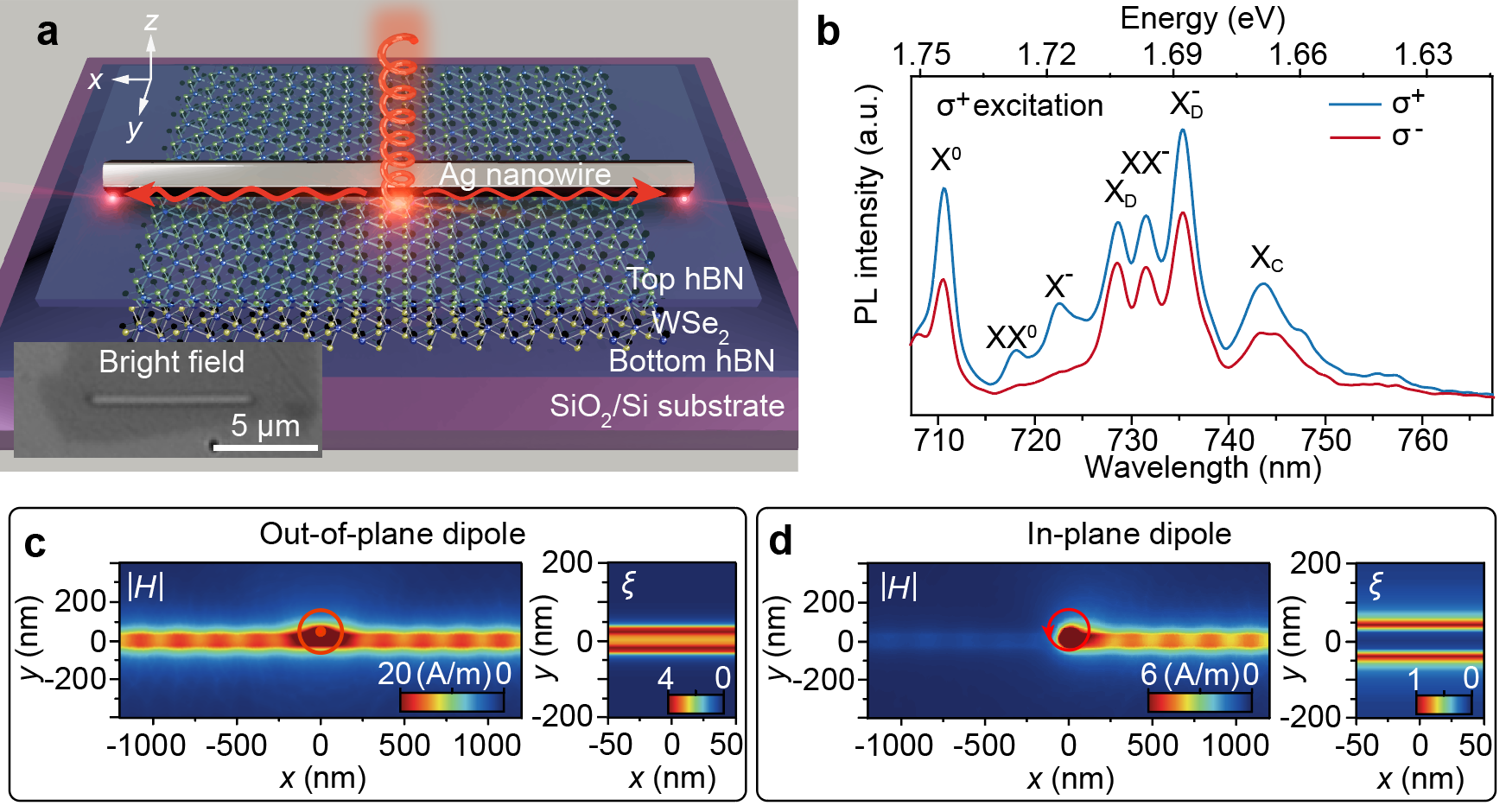The study showcases the contrasting interactions between excitons and surface plasmon polaritons (SPPs) of Ag nanowires (NWs), revealing independent coupling behaviors thanks to the orientation of transition dipoles. The findings demonstrate that dark excitons and dark trions exhibit an extremely high coupling efficiency with SPPs, while bright trions show directional chiral-coupling features, opening up new possibilities for controlling light emissions with precision.
The sample configuration involved an Ag NW and a monolayer WSe2 encapsulated between two thin hexagonal boron nitride (hBN) films on a SiO2/Si substrate. Through meticulous photoluminescence spectroscopy and numerical simulations, the team observed that dark excitons and dark trions couple more efficiently than their counterparts with in-plane oriented dipoles. Besides, the team demonstrates the approach to controlling the excitonic emissions through diffusion length and valley polarization. These discoveries not only deepen our understanding of many-body interactions and quantum phenomena in WSe2 but also pave the way for manipulating the full spectral profiles of excitons.
The implications of this study are vast for the field of photonics and quantum technologies. By manipulating excitons with such precision, new devices for optical information processing that are faster, more efficient, and have higher capacities than current technologies could be practical. Furthermore, the study’s insights into the chiral coupling of excitons could lead to the development of novel quantum optics applications, including quantum computing and secure communication systems.
This study represents a significant step in the quest to fully manipulate different exciton species on demand. It brings us closer to harnessing the comprehensive spectrum of TMD excitons for advanced optical and quantum applications, marking an exciting leap forward in material science and photonics research.
###
References
DOI
Original Source URL
https://doi.org/10.1038/s41377-023-01338-5
Funding information
This research was supported by National Key R&D Program of China (Grant No. 2021YFA1401100), National Natural Science Foundation of China (NSFC, Grant No. 62005202, 12074297, 62261160386), the Fundamental Research Funds for the Central Universities (No. 2042023kf0195), Guangdong Basic and Applied Basic Research Foundation (No. 2023A1515011222), China Postdoctoral Science Fund, No.4 Special Funding (Pre-Station) – 2022TQ0235, China Postdoctoral Science Fund, No.2 Special Funding (Pre-Station) – 2020TQ0234, Elemental Strategy Initiative, MEXT, Japan, grant JPMXP0112101001, and JSPS KAKENHI grants JP19H05790 and JP20H00354.
About Light: Science & Applications
The Light: Science & Applications will primarily publish new research results in cutting-edge and emerging topics in optics and photonics, as well as covering traditional topics in optical engineering. The journal will publish original articles and reviews that are of high quality, high interest and far-reaching consequence.


